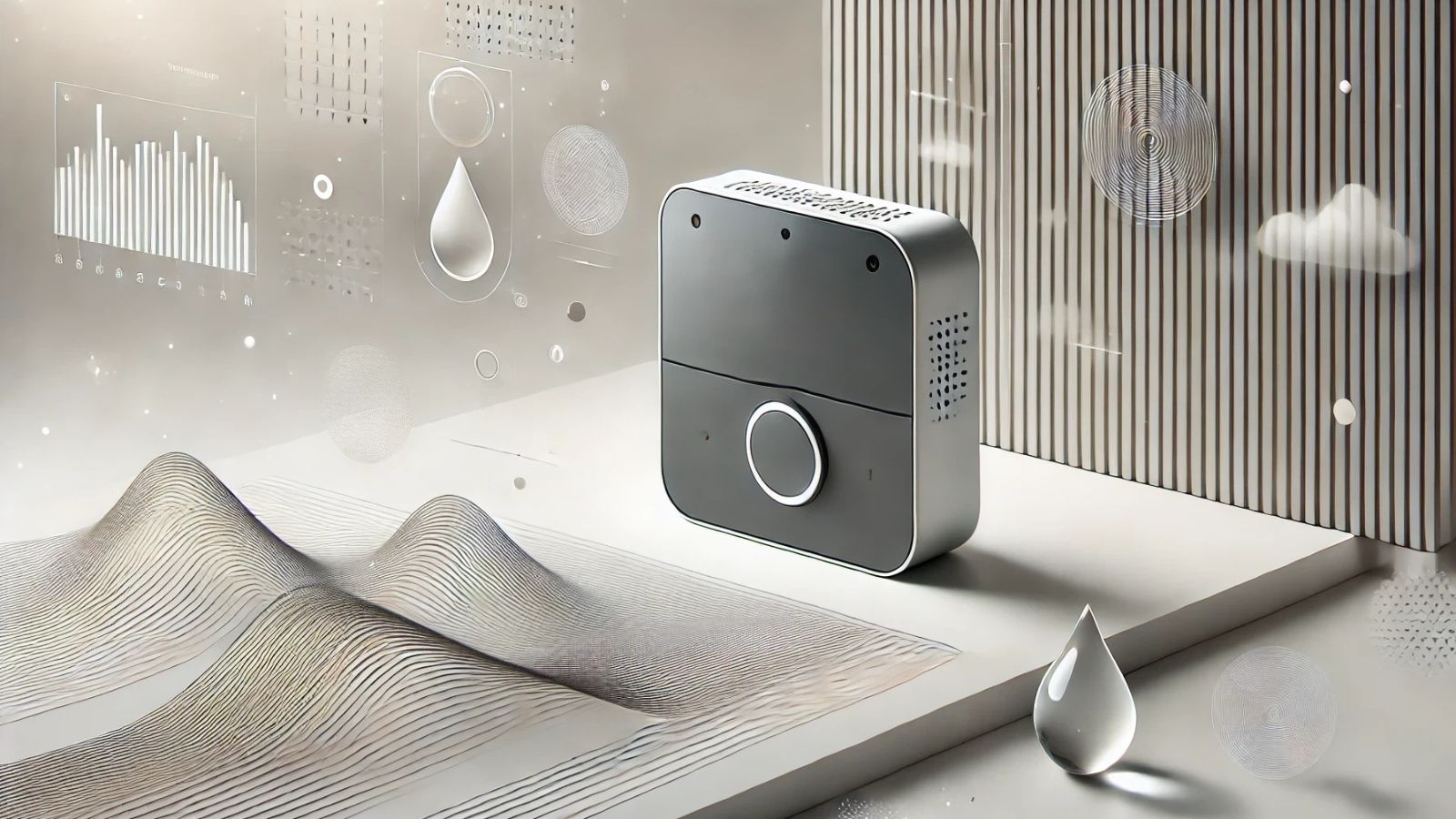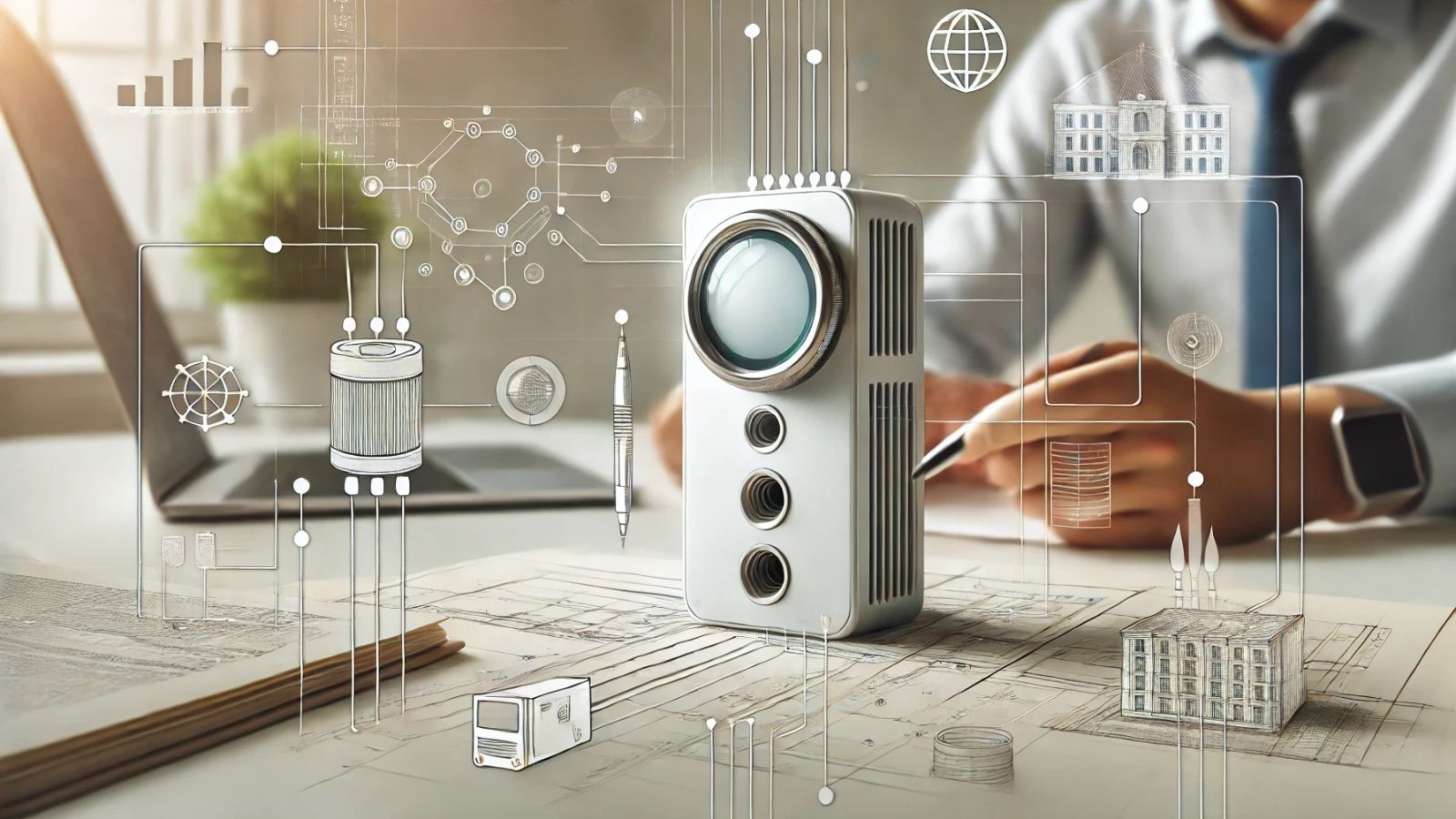How to Choose the Right Humidity Sensor: Expert Guide for Industrial Applications
Published by Anish Khatri on 6th Feb 2025

Modern humidity sensors can achieve an impressive accuracy of ±2% relative humidity, which makes them significant for precise industrial measurements. These sensors are essential tools that serve in a variety of industrial applications, from monitoring manufacturing processes to maintaining optimal storage conditions.
The sensors deliver outstanding performance with response times as fast as 6 seconds. Their detection capabilities range from 0% to 100% relative humidity, providing up-to-the-minute moisture monitoring. This capability is vital to prevent mold growth and optimize energy efficiency in HVAC systems. Each sensor type - capacitive, resistive, and thermal - brings unique advantages that match specific industrial needs.
This detailed guide will help you understand humidity sensor technologies and analyze your application requirements. You'll discover how to pick the most suitable sensor for your industrial environment. The guide covers everything from performance parameters to integration capabilities. You'll also learn implementation best practices that ensure peak performance in your specific application.
Understanding Humidity Sensor Types and Technologies
Understanding the basic differences between sensor types helps you retain control when picking a humidity sensor for your industrial application. The market currently features three main types of humidity sensors: capacitive, resistive, and thermal conductivity sensors. Capacitive sensors make up about 75% of all humidity sensor applications.
Comparing Capacitive vs Resistive vs Thermal Sensors
Capacitive sensors employ two metal electrodes with a dielectric material between them to measure moisture levels. These sensors deliver exceptional accuracy. Modern versions can achieve ±2% relative humidity precision. They work effectively at temperatures up to 200°C and recover completely from condensation.
Resistive sensors measure humidity by detecting changes in electrical impedance. They perform best in environments with humidity levels between 20-80% RH. You'll notice limitations below 5% relative humidity. Their response time ranges from 10 to 30 seconds for a 63% step change.
|
Sensor Type |
Accuracy |
Temperature Range |
Response Time |
|---|---|---|---|
| Capacitive | ±2-3% RH | Up to 200°C | 6s typical |
| Resistive | ±2% RH | -40°C to 100°C | 10-30s |
| Thermal | High precision | Up to 300°C | Variable |
Key Performance Parameters and Specifications
These vital parameters need attention when evaluating humidity sensors:
- Response time (typically 6 seconds in 20 l/min airflow)
- Long-term stability (±1.2% RH over five years)
- Operating humidity range (0-100% RH)
- Power consumption (as low as 1.8 μA at 1 Hz)
Temperature Humidity Sensor Integration Capabilities
Modern humidity sensors now include temperature sensing capabilities to provide complete environmental monitoring. These integrated solutions work with standard communication protocols like I2C or SPI. This makes them ideal for Arduino-based monitoring systems. The newest sensors achieve temperature accuracy of ±0.2°C while delivering optimal humidity measurements.
Industrial Application Requirements Analysis
Selecting a humidity sensor for your industrial application requires evaluation of environmental conditions and operational requirements. A full picture will give you optimal sensor performance and longevity in your specific industrial setting.
Environmental Conditions Assessment
The industrial environment directly affects your sensor's performance and durability. Temperatures above 40°C can affect measurement accuracy. Dust, chemicals, and condensation can substantially influence sensor readings. Sensors with NEMA-rated enclosures protect against dust ingress and moisture damage, making them ideal for challenging environments.
Accuracy and Response Time Needs
Your application's precision requirements will determine the needed sensor specifications. Standard industrial humidity sensors typically achieve accuracies of 2% to 3% RH. Response times can vary substantially in time-critical applications:
- Fast-response sensors: 5-10 seconds for 63% step change
- Standard sensors: 10-30 seconds for full-range response
Integration with Existing Systems
Your humidity sensor must naturally work with your current infrastructure. Key integration factors include:
- Temperature compensation capabilities that ensure accurate readings in varying conditions
- Communication protocol compatibility (I2C, SPI)
- Power consumption requirements (typically 750 μW without RF operation)
- Calibration and maintenance needs
|
Environmental Factor |
Consideration |
|---|---|
| Temperature Range | -40°C to +200°C |
| Chemical Exposure | Requires protective filters |
| Long-term Stability | 0.25% to 0.5% RH drift per year |
Selection Criteria and Decision Framework
You need to review both immediate and long-term costs against expected benefits to make smart decisions about humidity sensors. A methodical approach will give you a sensor that meets technical requirements and delivers optimal performance throughout its lifecycle.
Cost-Benefit Analysis Methodology
The upfront investment in humidity sensors goes beyond the purchase price. You should think about the sensor threshold marginal cost (STMC), which helps determine if additional sensors make economic sense for your system. The selection process should review energy savings and non-energy benefits, as these can substantially exceed direct cost savings.
|
Cost Factor |
Consideration Points |
|---|---|
| Initial Investment | Purchase price, installation costs |
| Operating Costs | Power consumption, maintenance expenses |
| Replacement Costs | Sensor lifespan, calibration requirements |
Maintenance and Calibration Requirements
Your sensor's accuracy depends on regular calibration. Standard industrial environments need calibration every 6-12 months. High-humidity environments might need it every 3 months. Here are the key maintenance factors:
- Field checks against reference instruments when deviation reaches 2-4% RH
- Multi-point calibration when applications need high precision
- Replacement of measurement modules with calibration certificates
Long-term Reliability Considerations
Your humidity sensor's long-term stability directly affects its reliability and maintenance needs. Modern capacitive sensors show a drift rate of 0.25% to 0.5% RH yearly. This adds up to about 5% RH change over ten years of operation. The drift creates problems - to name just one example, refrigeration systems might activate compressors unnecessarily due to false high-humidity readings. This reduces system efficiency and shortens component life.

Implementation and Integration Best Practices
The right setup and integration of humidity sensors play a vital role in getting the best performance in industrial environments. You need to think about where to place them physically and how to set up reliable data transmission for accurate measurements.
Installation Guidelines and Positioning
The right sensor position helps get accurate humidity measurements. Your wall sensors should be mounted 4-6 feet above the floor with good air flow around them. When installing in ducts, put the sensor probe in the duct's center away from fans, corners, and heating/cooling coils. Outdoor sensors work best in sheltered spots, preferably on buildings' north side under eaves. This keeps sun-heated air from affecting the readings.
Data Communication Protocols
RS-485 and Modbus protocols are the foundations of industrial sensor communications. RS-485 makes signal transmission possible up to 1200 meters and supports multiple devices on one bus. The Modbus protocol works above the hardware layer and makes standardized communication possible between devices from different manufacturers.
|
Protocol Feature |
RS-485 |
Modbus |
|---|---|---|
| Maximum Distance | 1200m | Network dependent |
| Nodes Supported | Up to 32 | Multiple devices |
| Communication Type | Differential | Master-slave |
Arduino-based Monitoring Solutions
Arduino platforms give you flexible options to integrate humidity sensors. A typical setup has an Arduino board, temperature-humidity sensor, and WiFi module that transmits data. The system collects environmental data and sends it to cloud platforms. This allows remote monitoring through mobile applications. The sensors need 3.3V input to work without damage, so proper voltage regulation is important.
Conclusion
Picking the right humidity sensor requires you to think about several factors that affect your industrial operations. You've learned about three main sensor types - capacitive, resistive, and thermal. Each type gives unique advantages for specific applications.
The environment plays a vital role in choosing a humidity sensor. Your selection depends on temperature ranges, chemical exposure, and how stable the sensor stays over time. A proper look at accuracy needs and response times will give a perfect match for your industrial setting.
Smart spending goes beyond the original purchase price. You'll need to evaluate maintenance schedules, calibration needs, and reliability factors. These elements substantially affect what you'll spend during the sensor's life.
The final step to successful humidity monitoring lies in getting the implementation right. The success of your humidity measurement solution depends on where you place the sensors, which communication protocols you use, and how well you integrate with existing systems.
This piece gives you the knowledge to make smart choices about industrial humidity sensors. Now that you understand sensor technologies, environmental factors, and implementation practices, you can pick and set up the perfect humidity sensor for your industrial needs.
FAQs
Q. What are the main types of humidity sensors used in industrial applications?
A. The three primary types of humidity sensors are capacitive, resistive, and thermal conductivity sensors. Capacitive sensors are the most common, accounting for about 75% of all humidity sensor applications.
Q. How often should industrial humidity sensors be calibrated?
A. In standard industrial environments, humidity sensors typically require calibration every 6-12 months. However, in high-humidity environments, more frequent calibration (as often as every 3 months) may be necessary to maintain accuracy.
Q. What factors should be considered when positioning a humidity sensor?
A. When positioning a humidity sensor, consider mounting wall sensors 4-6 feet above the floor with unrestricted air circulation. For duct-mounted installations, place the sensor probe in the center of the duct, away from fans, corners, and heating/cooling coils. Outdoor sensors should be installed in sheltered areas, preferably on the north side of buildings under eaves.
Q. What are the key performance parameters to evaluate when selecting a humidity sensor?
A. Key performance parameters for humidity sensors include response time, long-term stability, operating humidity range, and power consumption. For instance, typical response times are around 6 seconds, and long-term stability can be around ±1.2% RH over five years.
Q. How do temperature changes affect humidity sensor accuracy?
A. Temperature changes can significantly impact humidity sensor accuracy. Exposure to temperatures above 40°C can affect measurement accuracy. To address this, many modern sensors incorporate temperature compensation capabilities to ensure accurate readings across varying conditions.
